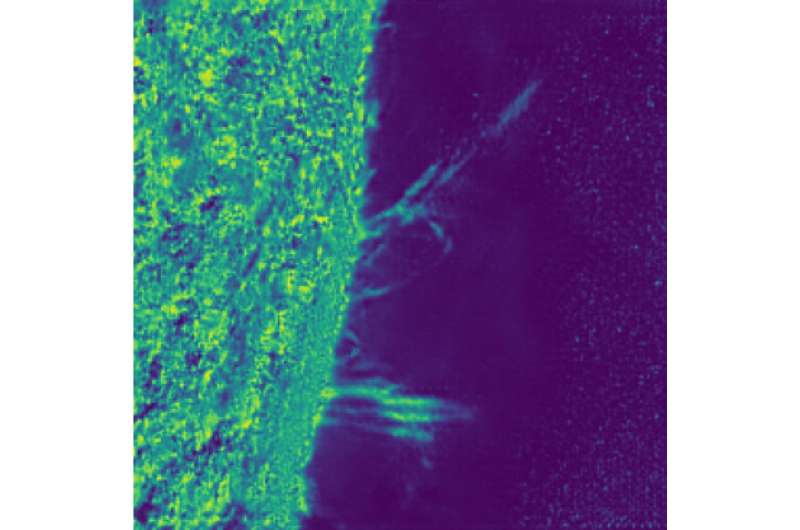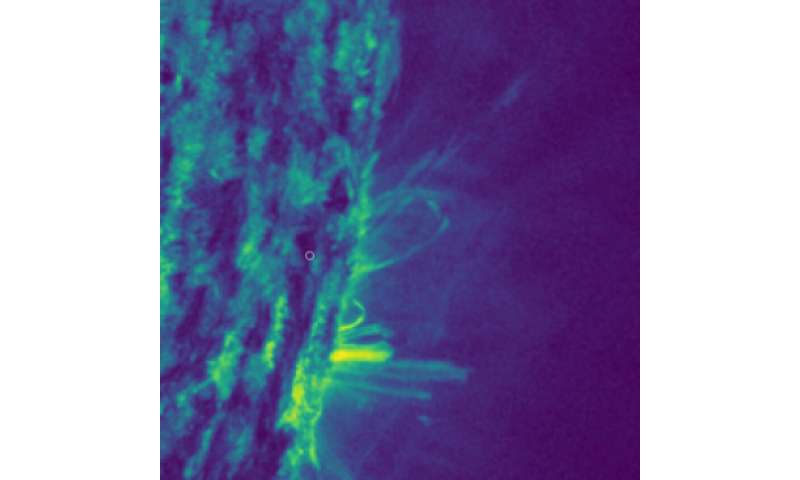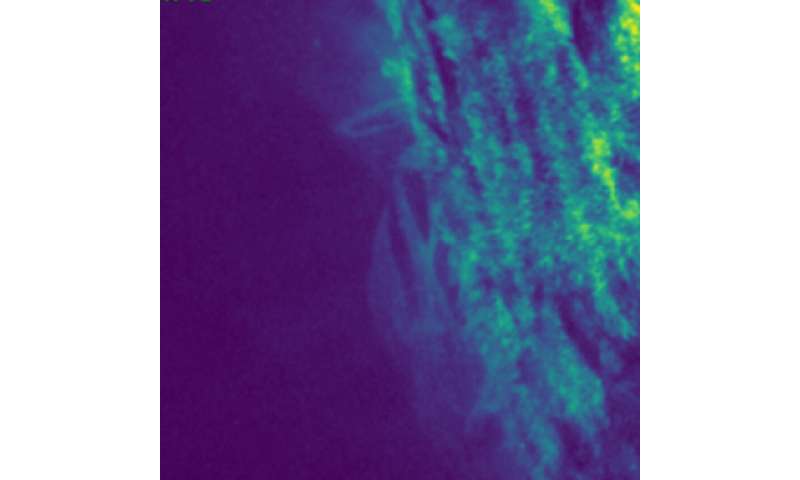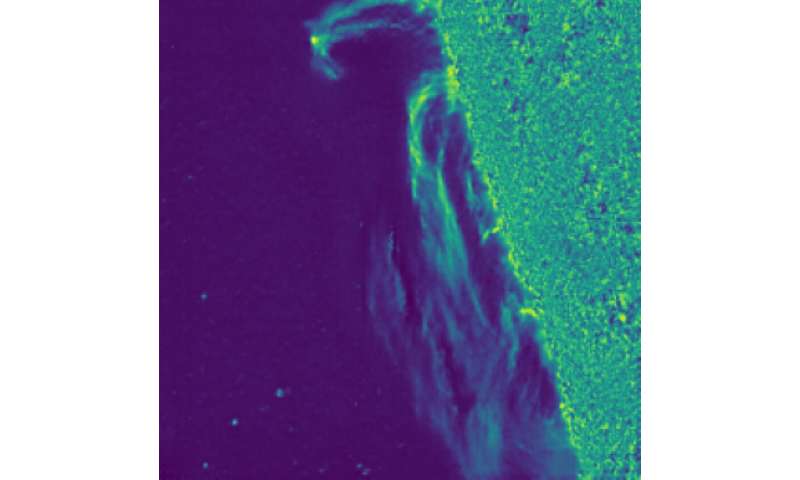This article has been reviewed according to Science X's editorial process and policies. Editors have highlighted the following attributes while ensuring the content's credibility:
fact-checked
trusted source
proofread
Scientists use deepfake AI images to understand the sun's atmosphere

Solar scientists are using deepfake AI images to unravel the mysteries of the sun's atmosphere. The research, being presented at the National Astronomy Meeting this week, was carried out as part of a collaboration between Northumbria University and the University of Bern.
For more than 80 years, solar physicists have been trying to understand how and why the upper reaches of the sun's atmosphere (the corona) are unexpectedly hotter than the layers closer to the surface. Scientists have narrowed it down to two possible causes: heating through the dissipation of waves in the plasma or through the energetic reconnection of magnetic lines. There is evidence for both happening but the amount that each process contributes to the total heating is still unknown.
The key to unlocking this mystery appears to lie in the beautiful phenomenon known as "coronal rain"—loops of cooler plasma that project out and fall back into the upper reaches of the sun's atmosphere. Identifying this rain is vital in furthering our understanding of the sun's underlying thermodynamics. The "rain" appears only to be generated by reconnecting magnetic lines. If scientists can find out how much coronal rain falls on the sun, they can determine how this unexpected heating cycle works.
To find out how much rain there is, it must be observed separately from the myriad of other solar materials. Most observations of solar rain are taken by the Atmospheric Imaging Assembly (AIA) aboard NASA's Solar Dynamics Observatory. However, the rain in these images is often obscured by hotter material. Alternative images taken by the Interface Region Imaging Spectrograph (IRIS), a NASA solar observation satellite, show the rain more clearly but can only capture a limited field of view. A Goldilocks set of images is needed in the high numbers of AIA with the sharp resolution of IRIS.
-

Original image of coronal rain plasma projections taken by the Atmospheric Imaging Assembly (AIA) aboard NASA’s Solar Dynamics Observatory. Credit: Luke McMullan / NASA Solar Dynamics Observatory -

An original image of coronal rain loops taken by the Atmospheric Imaging Assembly (AIA) aboard NASA’s Solar Dynamics Observatory, showing the blurring from hotter material. Credit: Luke McMullan / NASA Solar Dynamics Observatory -

Deep fake image of coronal rain generated by AI after studying a set of higher-resolution images from IRIS. Coronal rain loops are much more clearly visible. Credit: Luke McMullan / NASA Solar Dynamics Observatory
To solve this, researcher Luke McMullan from Northumbria University trained an AI machine learning algorithm to study the high-definition IRIS images and then enhance the more plentiful, lower-quality AIA images, creating "deepfakes" that will allow astronomers to understand how much coronal rain falls in the sun's atmosphere and subsequently solve the mystery of its unusual heat layering.
"We are living in a golden age for solar research," said Luke McMullan, the project's lead researcher. "Not only are we obtaining access to more high-resolution images of the solar atmosphere than ever before, but the rapid development and implementation of machine learning techniques in tandem with these observations allow us to find answers to problems that have hounded the community for decades. We anticipate this collaboration between observations and machine learning only to grow deeper and become a staple tool in our scientific arsenal."
Provided by Royal Astronomical Society



















